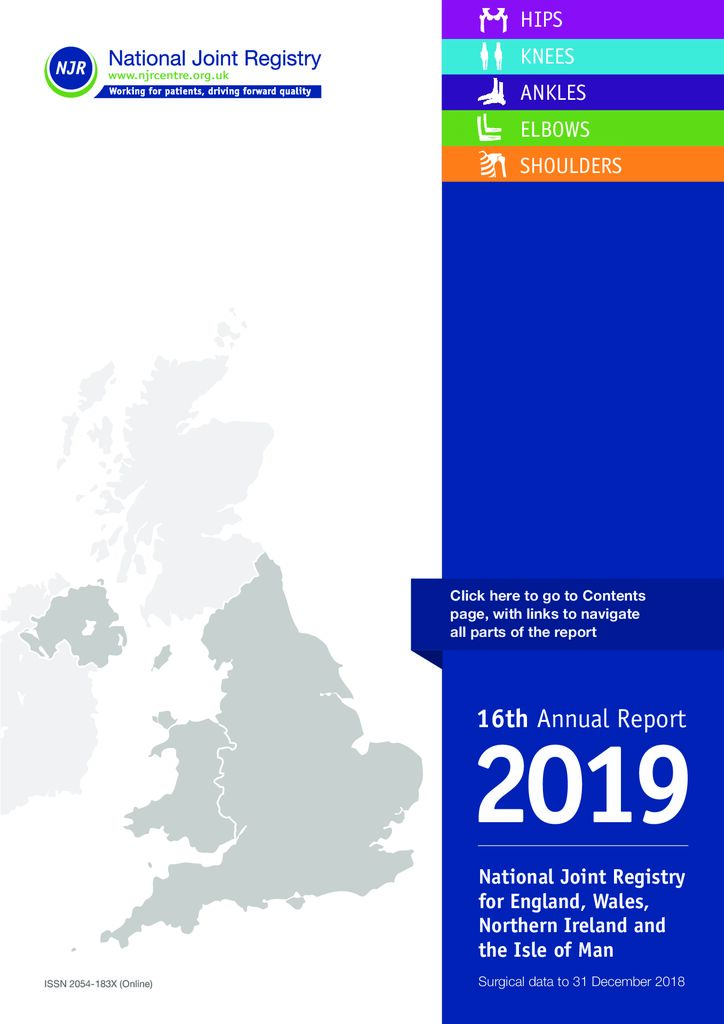National Joint Registry 16th Annual Report 2019
The National Joint Registry (NJR) collects information about hip, knee, ankle, elbow and shoulder joint replacement operations (arthroplasty) from all participating hospitals in England, Wales, Northern Ireland, the Isle of Man and the States of Guernsey. As the largest of its kind in the world, the registry has recently been described in UK Parliament as a global exemplar by the Under Secretary of State for Health and Social Care.
The purpose of the registry is to record patient information and provide data on the performance and longevity of replacement joint implants, the surgery outcomes for the hospitals where these operations are carried out and the performance of the surgeons who conduct the procedures. Each year the Editorial Board aims to make progress in reporting on our rich data resource, making data easily accessible to improve patient outcomes.
The NJR Annual Report comprises four parts
Parts One (annual progress), Two (clinical activity data) and the enhanced Part Four (Implant and Trust-, Local Health Board- and unit-level outcomes) are published online at the registry’s dedicated Annual Report website. The NJR’s Annual Report website is part of a long-term strategy to share our annual dataset in a more accessible, responsive and timely manner. Part Three (the analyses of outcomes after surgery) continues to be published as a printed report.
Part One: executive summaries, annual progress and highlights 2018-2019
These sections provide a general outline of the work of the NJR undertaken in the financial year from 1 April 2018 to 31 March 2019. As well as providing summary information about the NJR’s key data quality indicators of compliance, consent, and linkability, this section includes brief summaries of the work undertaken by the NJR throughout the year and the individual NJR sub-committee reports.
Part Two: clinical activity 2018
This section provides reports about clinical activity as reported to the NJR as at 28 February 2019. All reports are based on the calendar year 1 January to 31 December 2018.
Part Three: outcomes after joint replacement 2003 to 2018
These sections provide an analysis of survivorship for hip, knee, ankle, and shoulder replacements undertaken between 1 April 2003 and 31 December 2018.
Part Four: implant and unit-level activity and outcomes 2018
This section provides a series of indicators about clinical level activity and the outcomes of surgery at both a Trust/Local Health Board and hospital level. These include indicators of potential outlier performance for both mortality and revision rates in both hip and knee.
There is considerable additional information available online and we would encourage you to explore the NJR’s dedicated annual report website at reports.njrcentre.org.uk. The website offers a helpful interactive platform for the descriptive NJR data, with supporting appendices; and the latest NJR Patient Guides.


